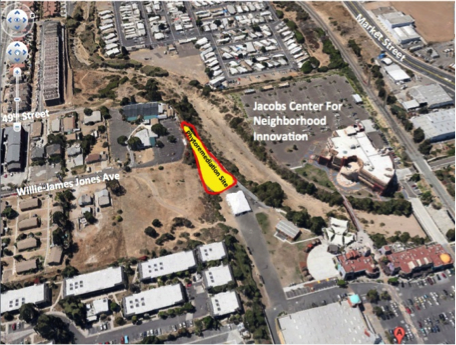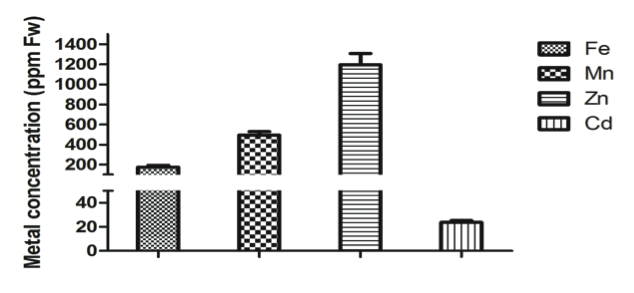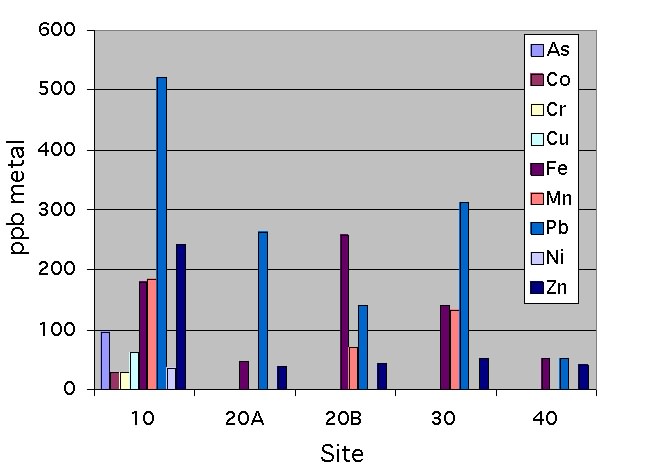Aims: The goal of this outreach program
is to provide expertise and assistance in assesing heavy metal
contamination at public sites and community gardens. An example is
provided here of in remediation of a brownfield site in Southeast San
Diego. The site is an approximately 5,000 square feet triangle at the
SW corner of the Jacobs Center for Neighborhood Innovation property.
Chollas Creek runs along (and below) the North side. The South side is
at the bottom of a hill on top of which sits the Guam Community (Figure
1). The site is located inside the Pueblo Watershed, which is the
smallest and most polluted watershed in SD county. It is comprised of
60 square miles of predominantly urban landscape in San Diego that are
drained by Chollas Creek, an urban coastal stream that emtpies into the
San Diego Bay. As a result of urban runoff, Chollas Creek and the mouth
of the creek in San Diego Bay is classified as "impaired" by the
California State Water Resources Control Board. It contains hazardous
levels of several metals inclusing copper, lead, and zinc. The Pueblo
Watershed is home to 20 low-income neighborhoods, which are
collectively referred to as Southeast San Diego (SESD). There are 591
vacant lots in SESD, many of which are Brownfield sites
1.
Figure 1: Location of the brownfield site of interest in Southeast San Diego.
The site is approximately 5,000 sq ft at an intermediate elevation
relative to the surroundings, with Cholas Creek below and the Guam
center on a hill above. The entire site was previously a military
munitions plant that was decommissioned in the 1970's.
To evaluate the type and extent of contamination at the site, soil and
plant tissue samples were collected. The initial plant tissue samples
were collected and tested by Timothy O. Jobe, Qingqing Xie, Andrew
Cooper in Julian Schroeder's Laboratory at UCSD and the soil samples
were tested by Nicolas Lopez at SDSU Public Health laboratory. Several
metal contaminants were found in the soil, including cadmium, arsenic,
an cobalt. Similarly, high cadmium was found in the plant tissue
samples (Figure 2).
Figure 2: Composite metal concentrations found in plant tissue collected from the proposed community garden site.
While the concentrations of iron (Fe), manganese (Mn) and zinc (Zn) are
within normal concentrations for plants, the cadmium (Cd) concentration
is considerably higher than most foodstuffs, which generally contain
less than 1 ppm.
Undergraduate students recieve training and pursue research projects
aimed at testing and comparing the ability of different plant species
to accumulate toxic metals. Students are being trained in presenting
their research findings. Furthermore, we are recommending that the land
owner implement a phytoremediation demonstration program at this site.
This would be a set of side-by-side plots growing a combination of
plants selected for the specific contaminants. Plant and soil samples
would then be re-tested regularly and, based on test results, replanted
with an optimized selection of plants.



